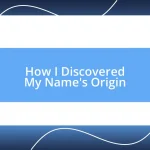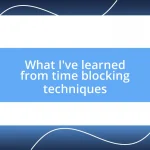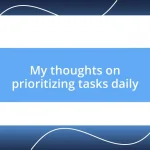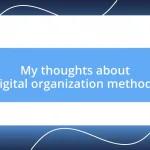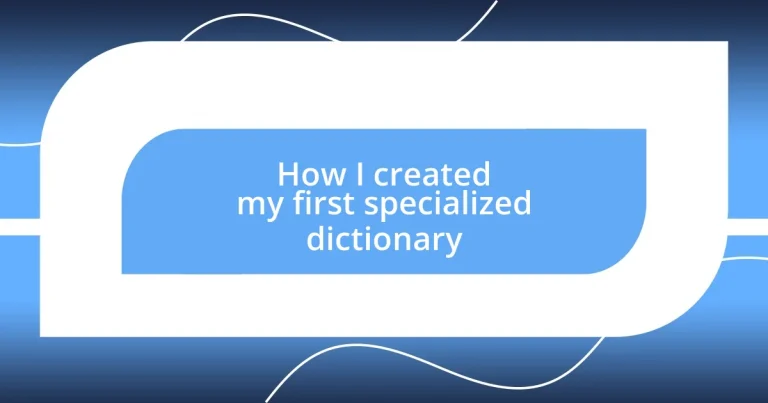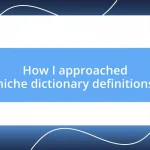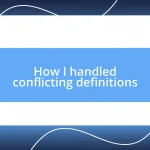Key takeaways:
- Understanding specialized dictionaries involves not just definition compilation but also capturing context and practical usage, making terms accessible.
- Identifying the target audience is crucial; tailoring content to their background, needs, and purposes ensures that the dictionary resonates with users.
- Reviewing and editing are essential for creating a valuable resource, as feedback from peers can refine definitions and enhance accessibility for a broader audience.
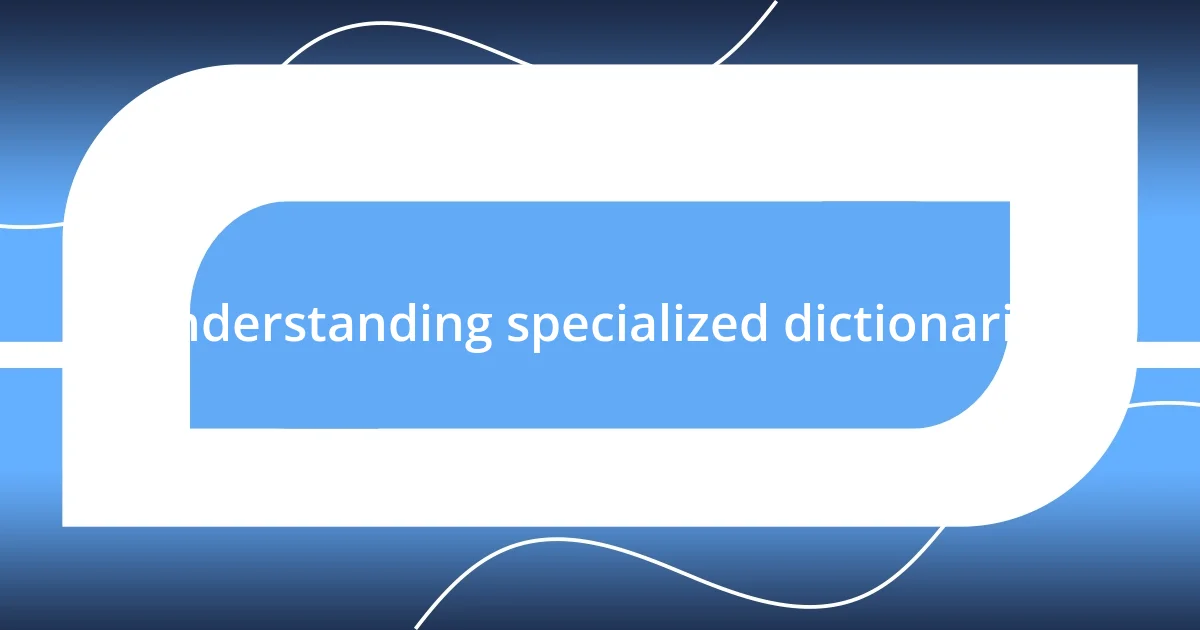
Understanding specialized dictionaries
Specialized dictionaries, unlike general ones, focus on specific fields such as medicine, law, or technology. I remember the first time I consulted a medical dictionary while writing an article; it felt like stepping into a new world where every term held a wealth of knowledge. Isn’t it fascinating how a single word can carry so much significance in a given context?
Creating a specialized dictionary requires an understanding of the nuances and terminologies unique to that field. When I began drafting mine, I noticed how often I encountered jargon that could befuddle those unfamiliar with the subject. This experience made me question: how can we make specialized terms more accessible without diluting their meaning?
In my journey, I’ve learned that it’s not just about compiling definitions; it’s about capturing the essence of the field. A specialized dictionary should not only explain terms but also provide context and examples. For instance, I often included scenarios where specific terms apply, allowing readers to visualize their usage. Don’t you think a little storytelling can make learning new vocabulary so much more engaging?
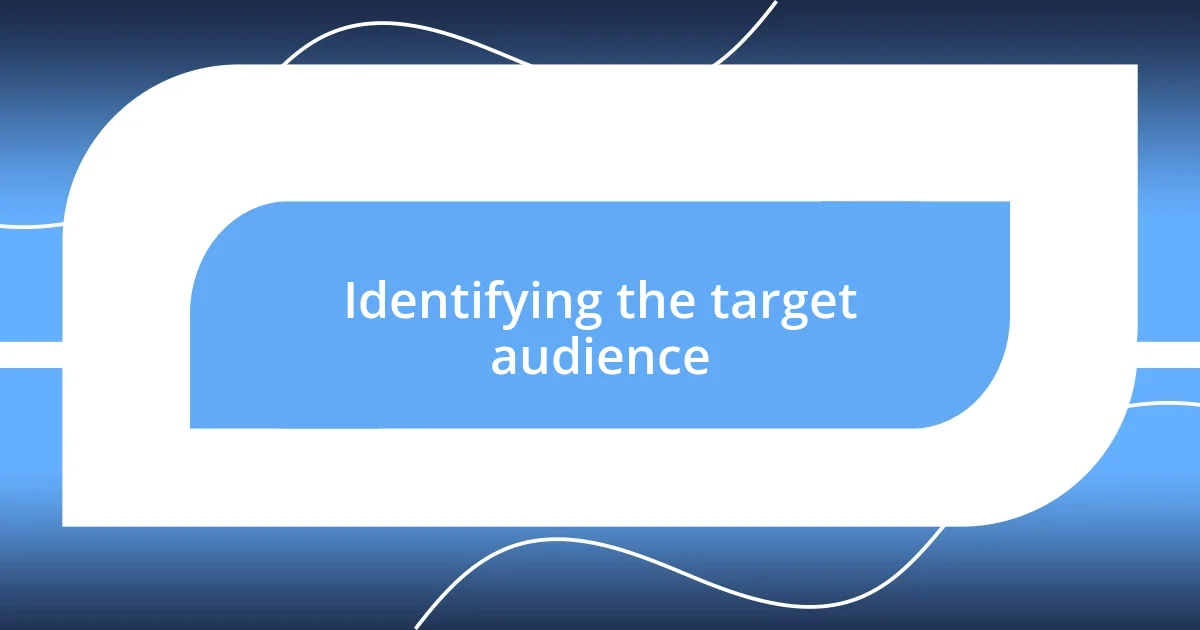
Identifying the target audience
When I started creating my first specialized dictionary, pinpointing the target audience felt like my compass. Understanding who would benefit from this resource shaped every decision I made. I vividly recall a conversation with a friend studying law; he mentioned needing simple definitions for complex legal terms to help him with his studies. That was my lightbulb moment—realizing how crucial it is to tailor content to meet the actual needs of users.
To identify my target audience effectively, I considered various factors:
- Field of interest: What specialized area requires clearer terminology?
- User’s background: Are they novices, students, or professionals?
- Age and education level: How does their demographic impact their understanding?
- Purpose of use: Are they using the dictionary for study, work, or casual learning?
By focusing on these dimensions, I was able to create a dictionary that truly resonates with its users—something that speaks their language and reflects their experiences.
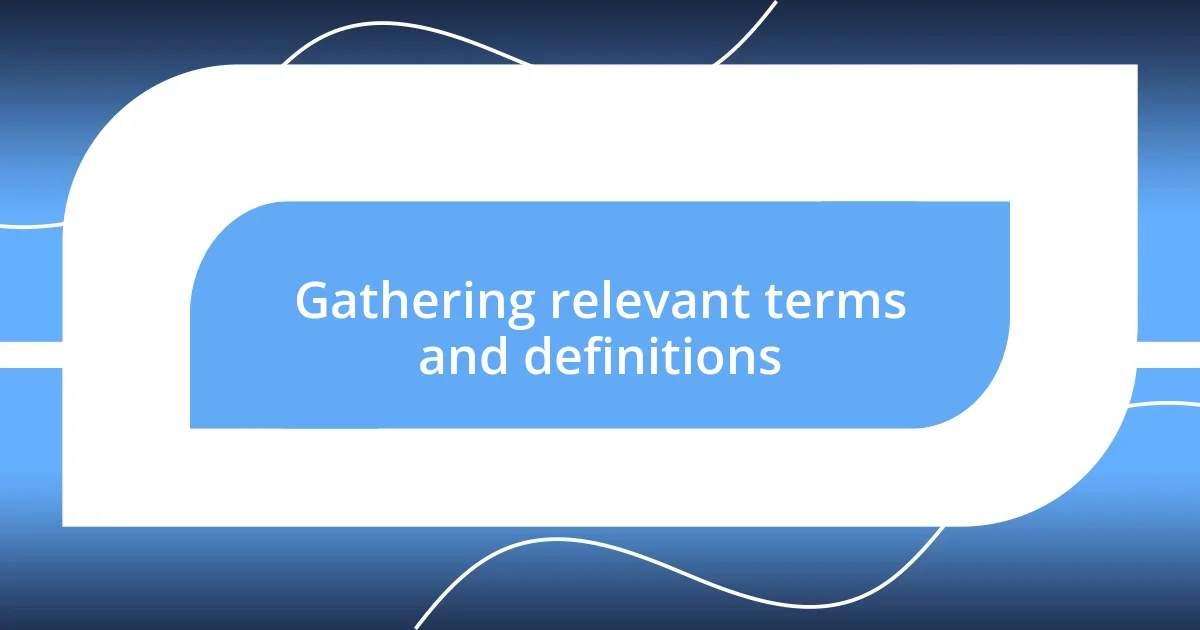
Gathering relevant terms and definitions
I found that gathering relevant terms and definitions was an exciting challenge. Initially, I brainstormed terms based on my experiences in the field. I recall diving into textbooks and online resources, fueled by curiosity. I began to create lists, some terms jumping out at me while others required digging deeper. It felt rewarding to see the definitions taking shape, truly reflecting the heart of the field I wanted to cover.
As I collected terms, I realized the importance of cross-referencing definitions with other specialized resources. I kept track of these sources, marking them for later citation. Imagine unearthing a term that seemed irrelevant at first but revealed layers of meaning when explored further. This practice not only expanded my vocabulary but also enriched my understanding of the subject. It’s like piecing together a puzzle—each term brought me closer to a complete picture.
I also decided to engage with peers and experts in the field. Asking for their input was invaluable. Sharing a cuppa while discussing terminology turned out to be a fantastic way to gather insights. Their lived experiences added context to definitions that I might have overlooked. Connecting on this level transformed my dictionary into a collaborative effort rather than a solo endeavor.
| Method | Description |
|---|---|
| Brainstorming | Creating initial lists of terms from personal experience and research. |
| Cross-referencing | Using specialized resources to validate and deepen definitions. |
| Consultation | Engaging with experts and peers for diverse insights and context. |
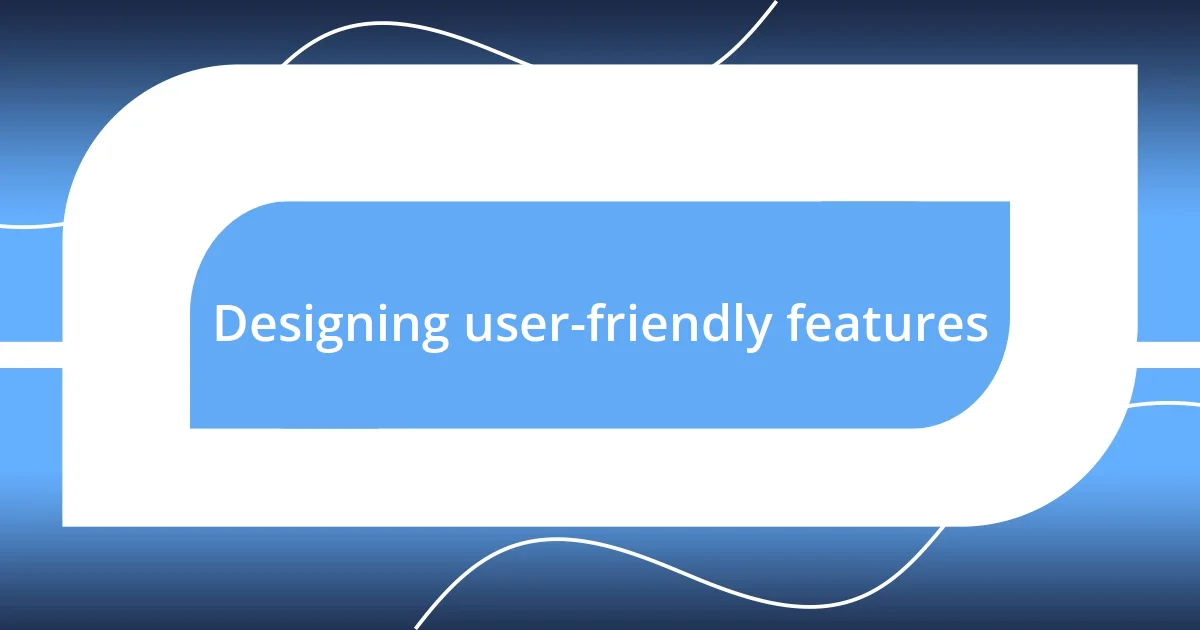
Designing user-friendly features
Designing user-friendly features became an essential part of my dictionary’s appeal. I vividly remember creating a layout that felt comfortable for users. Choosing a readable font and incorporating plenty of white space was a no-brainer; I wanted readers to feel at ease while they navigated through the definitions.
One pivotal feature was the inclusion of visual aids. I still recall the joy I felt when I added diagrams and illustrations to clarify complicated concepts. Imagine flipping through pages and coming across a chart that perfectly encapsulates a term—didn’t that make the learning experience much more enjoyable? This kind of feature not only enhances understanding but also keeps the user engaged and curious.
Another user-friendly element I introduced was a search function. Initially, I thought about merely listing terms alphabetically, but then I asked myself: How can I make the experience quicker and more intuitive? Implementing a search bar allowed users to find what they needed without sifting through endless pages. It’s like having a conversation where you can skip the small talk and get straight to the heart of the matter. These thoughtful features can transform how users perceive and utilize a specialized dictionary.
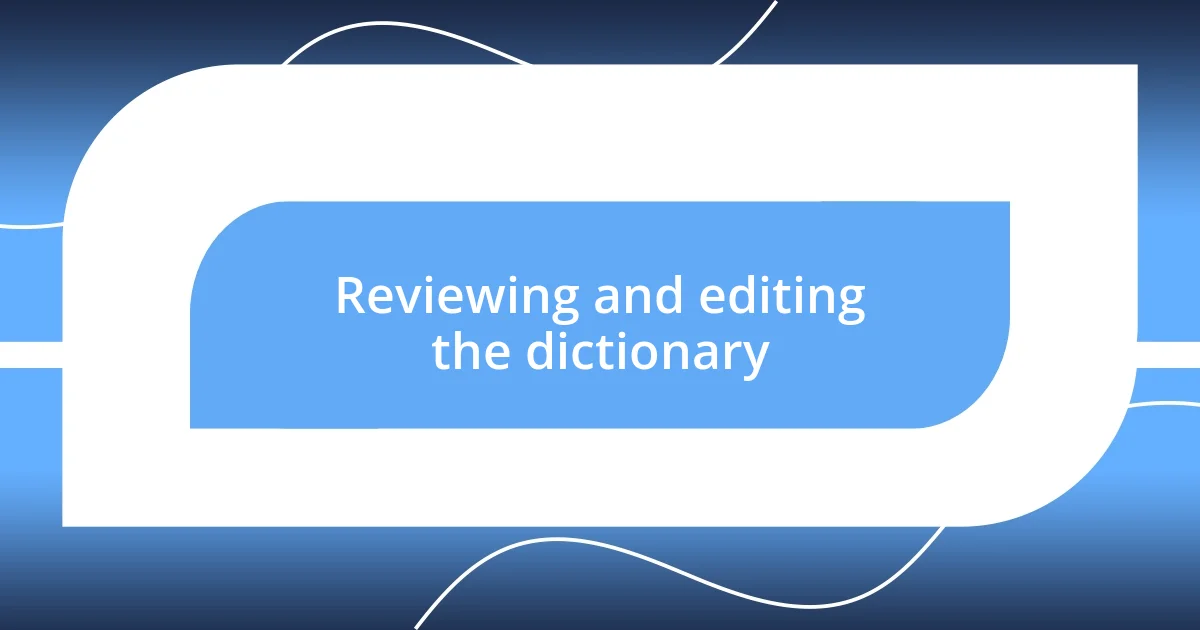
Reviewing and editing the dictionary
Reviewing and editing my specialized dictionary was both a meticulous and enlightening process. I distinctly remember the moment I sat down with a red pen, ready to comb through each definition. It was fascinating to see how some terms resonated with clarity while others felt half-formed, like a song missing a note. With each pass, I asked myself: Does this resonate with the reader? If not, how can I refine it?
I also sought feedback from a small group of trusted peers, and their insights were illuminating. During a particularly engaging meeting, one friend pointed out how a definition could be too technical for newcomers. That made me realize my early drafts sometimes catered too much to experts, making them less accessible. This experience taught me the value of fresh eyes and diverse perspectives in ensuring that my dictionary would serve a wider audience.
As I revised each entry, I found joy in the evolution of terms and their definitions. I vividly recall the process of incorporating user feedback, which made my work feel like a collaborative piece rather than a solitary venture. It felt like tuning an instrument—adjusting the pitch until everything harmonized perfectly, and I loved that rewarding feeling when a definition finally clicked into place. In this journey, I learned that editing goes beyond correcting errors; it’s about crafting a narrative that resonates and informs.


